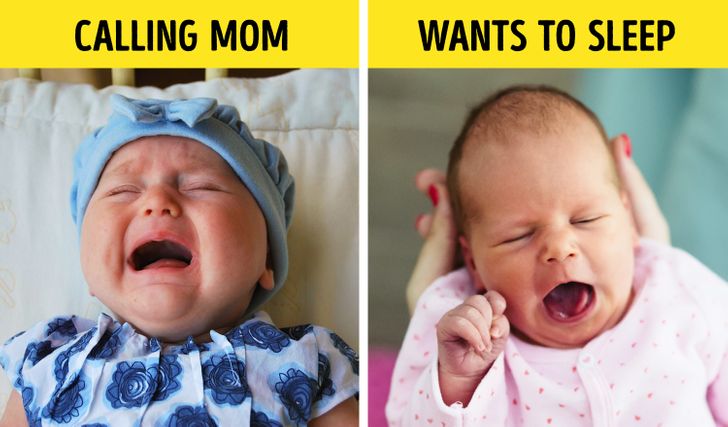
Managing a baby can be stressful, especially in the baby’s first few months of life when the baby’s language development has not kicked in.
You want to give the best care to your baby but how do you know what your baby needs at every point in time?
The main way a baby communicates is by crying but does it mean he wants to sleep, eat, comfort, be afraid, or be sick?
Therefore, every mother should understand how their babies communicate without words and encourage their babies to communicate properly.
How to Understand Baby Talk
The early communication of a baby is to stare at the mother, move the limbs, smile or cry.
The following are some babies’ needs and how they communicate them to you.
When a baby wants to Sleep
When your baby starts rubbing her eyes, turning her face, frowning, or feeling dizzy, they’re signs to know your baby wants to sleep.
It is very important to offer your little darling some rest because when babies are tired, they can start crying excessively and it can become difficult to pacify them to sleep.
When a baby is hungry
A common way a baby communicates he wants to eat is by sucking her fingers, and they also turn their heads back and forth and their eyes seem to be looking for something.
If you gently place your finger at the corner of her mouth the baby starts to suck your finger, then he’s hungry.
There are also recommendations for breastfeeding and feeding babies, but you can be sure your baby wants to eat if you study her gesture.
Not all babies have a four-hour eating rhythm, therefore, if he’s hungry again after two hours of breastfeeding or bottle-feeding, you should respond to her hunger.
When a baby wants to play with you
You can tell that your baby wants to play with you when he stares at you and smiles non-stop.
Also, when he focuses on you and his eyes are wide open, he may want your attention and also have fun with you.
Babies like it when you play with them, and sooner or later, they understand people who’re closer to them and always play with them.
Other signs babies want you with them are when they babble or chuckle, get excited and full of energy, or make an impression of being happy.
When a baby has a stomach ache
Digestive problems are common in babies because their digestive system is not fully developed and stomach ache is more common in babies who give formula rather than breast milk.
If your baby suddenly pulls off her mouth while breastfeeding or taking formula in a feeding bottle, and starts crying, then he’s not likely comfortable with her stomach.
Also, your baby can start to scream when you want to lay him or his bed after eating.
Flatulence and three-month colic occur particularly in the first three months of the life of your baby.
How to Solve Baby’s bloating problem
If your baby’s stomach is bulging, especially if it’s on both sides of the stomach and there is distention after a meal, burping your baby can work to bring comfort.
Belching the baby is also effective, start with a gentle stomach massage and then to his back.
If the baby is breastfed, the mother should avoid flatulent and spicy foods. Fennel and caraway tea are good remedies for gas and flatulence.
Hot water bottles or warmed cherry stone thermal pillows can also work wonders.
If the symptoms occur frequently, it makes sense to see a pediatrician. He or she can prescribe medication to treat the bloating and remove the gas in the baby’s intestines.
When Baby won’t Rest
Many babies are overwhelmed with the fun and activities of the day, and later they suddenly start crying for no real reason and are difficult to calm down, especially in the first few weeks of life.
What you need to do is to bathe the baby if it’s summer and take him/her to a quiet and cool environment, or train your baby with a sleep rhythm.
When your baby is hot or cold
The best way to tell if your baby is too warm or too cold is to conduct a neck test.
Put your fingers on the back of the baby’s neck. If the skin is dry and warm there, there is nothing to worry about.
You make adjust the temperature of the baby by adding or removing her clothing, using cooling or heating devices to adjust the temperature of the environment accordingly to suit your baby.
How to Calm a difficult Baby
The most effective way of calming your baby is to put your baby in your arm since babies love their mother’s heartbeat and warmth.
Lullabies or quiet music also help your baby to get relaxed.
Some babies also become calm while driving a car or pushing in a stroller.
Baby massage and soothing baths can as well help to calm down your baby.





